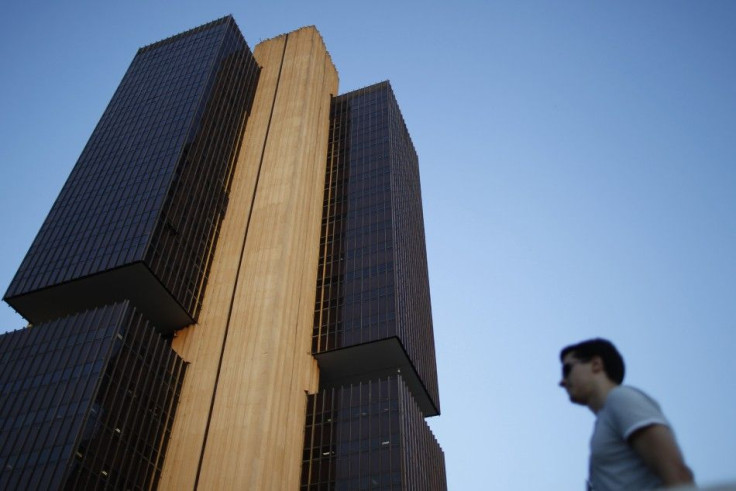Brazil Cuts Benchmark Rate To Near-Record Low 9%

Brazil’s central bank cut its benchmark interest rate to 9 percent from 9.75 percent, bringing the rate down to a near-historic level. This is the sixth time Banco Central do Brasil has reduced its so-called Selic rate since August, when it cut the rate to 12 percent from 12.5 percent.
“Given the fragility of the global economy, the contribution from the foreign sector has been disinflationary,” the central bank’s monetary-policy committee, known as Copom, said Wednesday in a statement.
Brazil has been on the precipice of recession since the latter half of 2011. The world’s sixth-largest economy grew by only 2.7 percent last year, down from 7.5 percent the previous year. The government is trying to keep the price of the real down in order to spur domestic spending to help meet the 4 percent growth target for 2012.
Reducing the Selic rate also helps check speculative capital inflow, or hot money, that can raise the cost of the currency and make exports and domestic goods and services less competitive.
Even though the benchmark interest rate is approaching the record low of 8.75 percent (set in July 2009) some have speculated that the bank’s apparent lack of concern about inflation is a hint it might cut the rate further.
They were very dovish and inconsistent with the guidance that they provided, Alberto Ramos, senior economist with Goldman Sachs in New York, told Reuters. They definitely leave the door open for additional rate cuts.
In its executive summary following its monthly meeting in March, Copom stated, “The international scenario continues to show disinflationary bias for the relevant horizon, which makes the balance of risks for domestic inflation more favorable.”
The bank currently targets an inflation rate of 4.5 percent for 2012.
© Copyright IBTimes 2025. All rights reserved.






















